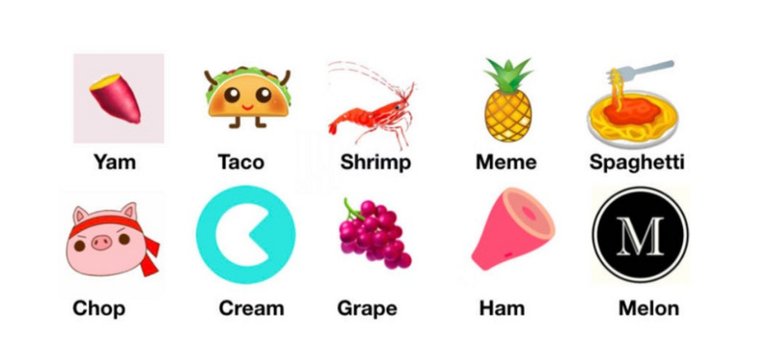Since June, Compound has started liquidity mining, Uniswap's fund pool and AMM model, YFI has launched aggregate mining and the price of YFI tokens has surpassed Bitcoin. This is the basis and demonstration of this game. It is a variety of high-yield imitations from Ethereum to TRON, EOS and Binance Smart Chain.
The Uniswap imitation Sushiswap on Ethereum, its token Sushi went from a unit price of less than US$1 to US$12 within 24 hours, and some exchanges skyrocketed to US$15, and then the price was cut in half on the second day and afterwards. People dumped the tokens and dropped the price to 1.5 US dollars. Although Sushi has been handed over to FXT, in the face of Uniswap's money-spending spree, its unit price has been hovering around 2 US dollars and there is no big improvement.
After taking over from Sushi, another mining project, Sashimi, the price of its token Sashimi has risen and dropped by more than 60% after it went online. Compared with the high point, the price has fallen by more than 90%. Kimchi is even worse, with the price falling below 95%. .
In fact, the DeFi bubble on Ethereum can basically be counted from the YAM crash due to a code vulnerability. Even if the official announced the restart after the crash and commissioned the domestic security audit company Paidun Technology to do security audits, it seems that it is difficult to achieve good results. According to Weibo KOL Super Bitcoin, investors who participated in YAM’s restart on September 20 may have ushered in a new wave of losses.
Of course, as Shasa experienced, compared with the DeFi bubble on Ethereum, Justin Sun’s DeFi ecology of TRON is even more tasteless. Most projects are temporarily packaged for the purpose of collecting money, and there is almost no technical atmosphere. , A large number of users suffered serious losses due to counterfeit currency, smashing and other incidents. In addition, compared with Ethereum, TRON lacks the support of underlying borrowing assets, and the risk of systemic collapse is greater.
Compared with the DeFi products in the public chain ecology, it can at least maintain the situation for more than one day's high-light moment. The DeFi product BakerySwap developed based on the Binance Smart Chain can be called the "short-lived ghost" among the many high-speed DeFi projects. According to users who participated in the mining, its token BAKE fell rapidly after the rapid rise. After only one hour of going online, the annual income of the BAKE pool dropped from 1,473,349.58% to about 40,000 times. BAKE: BNB also increased from 1:1 It has developed to 100:1, and some investors even indicated that Binance is using DeFi to absorb BNB in circulation.
However, if analyzed from the perspective of supply and demand, the emergence of imitation projects such as sweet potatoes, sushi, salmon, corn, pearls, kimchi, carrots, and bread did not meet investors’ expectations of getting rich, but they made up for those who missed early mining to get rich. The investor psychology of Inspur, on the other hand, can also be regarded as the market’s Fomo sentiment towards DeFi liquidity mining that gave birth to the bubble.

However, the premise of the bubble is that a large number of imitation projects without underlying assets and technological innovation have flooded the market. Whether it is the economic model, governance mechanism, or security issues that it promotes, it will be a potential risk for DeFi and even the cryptocurrency market. .
Earlier, the cryptocurrency exchange Coinbase summarized the potential risks. In terms of expansion, it includes four aspects.
One is the risk of smart contracts: DeFi smart contracts are easily exploited by hackers, such as the earlier theft crisis of bZx, Curve and Lendf.me;
The second is the system design risk: many DeFi protocols do not operate for a long time, but they provide a large number of incentives, such as Balancer. At present, with a simple loophole, FTX can obtain more than 50% of the benefits;
The third is liquidation risk: the encrypted collateral in the DeFi agreement is easily affected by market fluctuations, and there is a risk that debt positions will be under-collateralized in market fluctuations, which will then induce a liquidation mechanism and cause users to suffer further losses;
The fourth is bubble risk: the price dynamics of some underlying network tokens (such as COMP) will be relexive, because the expected future price is usually related to the degree of network popularity and application, and the network usage is in turn inspired by the network in the future. Price impact
However, despite the huge hidden worries under the bubble, there are still speculators coming in after Uniswap issued the governance token UNI and started the money-spending mode.
Posted Using [LeoFinance](https://leofinance.io/@sherlly3/defi-dilemma-under-the-bubble)
Congratulations @sherlly3! You have completed the following achievement on the Hive blockchain and have been rewarded with new badge(s) :
You can view your badges on your board and compare yourself to others in the Ranking
If you no longer want to receive notifications, reply to this comment with the word
STOPDo not miss the last post from @hivebuzz: